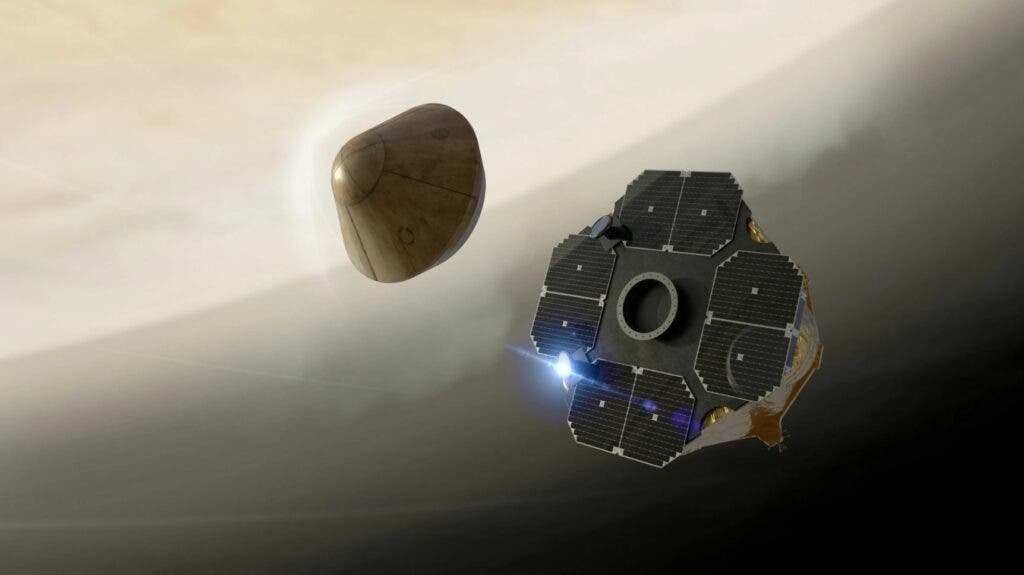Next year could see the launch of the first private exploration mission to Venus. Its goal? To look for alien life.

Around two years ago, the detection of a gas called phosphine in the clouds of Venus sent the scientific community into a buzz. On Earth, phosphine is created through biological processes. The detection of the gas on Venus, thus, was taken as a sign that life may indeed exist on our scorched and acid-drenched planetary neighbor. Since then, speculation abounds on what the presence of this gas actually means for Venus.
But we will soon gain some knowledge on this issue as a low-cost mission by American-based company Rocket Lab will actually go to Venus and poke around its atmosphere for signs of alien life, according to MIT.
Short-lived
The mission is one of three new missions selected by NASA and the European Space Agency (ESA) to go investigate Venus in the wake of the discovery of phosphine in its atmosphere. Their central objective will be to look for signs of alien life on the planet or, at least, determine if the planet could have supported life at one point in its past. China and India have their own missions in the works for Venus.
But most of these missions will not be returning to Earth until the 2030s, which would be quite a long time to wait for answers. So researchers at MIT contracted the New Zealand–based launch company Rocket Lab to send one of their rockets to Venus before any of the other missions were ready. The launch is scheduled for 2023, with a backup launch window available in January 2025.
Its main objective will be to check for the presence of microbes. While the general consensus is that the surface of Venus is completely inhospitable to life, the researchers are pinning their hopes on the tiny droplets of sulfuric acid that exist in the higher levels of Venus’ atmosphere; life might be able to survive here, as these drops present significantly milder living conditions than the surface.
The mission will be the first privately-funded trip to another planet. According to the mission statement, Rocket Lab will be employing a small, multipurpose spacecraft they developed themselves for the mission. Called Photon, this craft was designed with versatility and low cost in mind so that it can be sent to multiple locations in the Solar system. The Photon craft was already used for a NASA mission to the moon back in June, and on this trek, it will deliver a small probe into the atmosphere of Venus. After launching in May 2023, the craft should take around five months to reach Venus.
The probe itself is still under development by a team led by Sara Seager at MIT, and will weigh around 45 pounds (20kg). It will measure 15 in (38cm) across and will be cone-shaped with a heat shield in the front. This element will protect it from the immense heat generated as the probe dives through the Venusian atmosphere at around 40,000 kilometers per hour. The probe contains a single instrument due to size and radio power limitations, and no onboard video camera. The device is an autofluorescing nephelometer, which will use an ultraviolet laser to study the chemical composition of droplets in Venus’ atmosphere causing any organic compounds they might contain to fluoresce.
While discovering such molecules in the droplets won’t be definitive evidence of ongoing or past biological processes on Venus, it would lend further weight to the idea that Venus might be a potential environment for alien life.
All in all, the mission will be extremely short — the probe will only stay in the clouds of Venus for around five minutes. If it survives these, it could beam back some data taken from under the cloud cover. All in all, the probe will hit the ground around one hour after entering the atmosphere of Venus.
With a total price estimated at under $10 million, the mission is quite high-risk but very low-cost: its price tag is only 2% of each of NASA’s Venus missions. It was fully funded by Rocket Lab, MIT, and several philanthropists who chose to remain anonymous.


